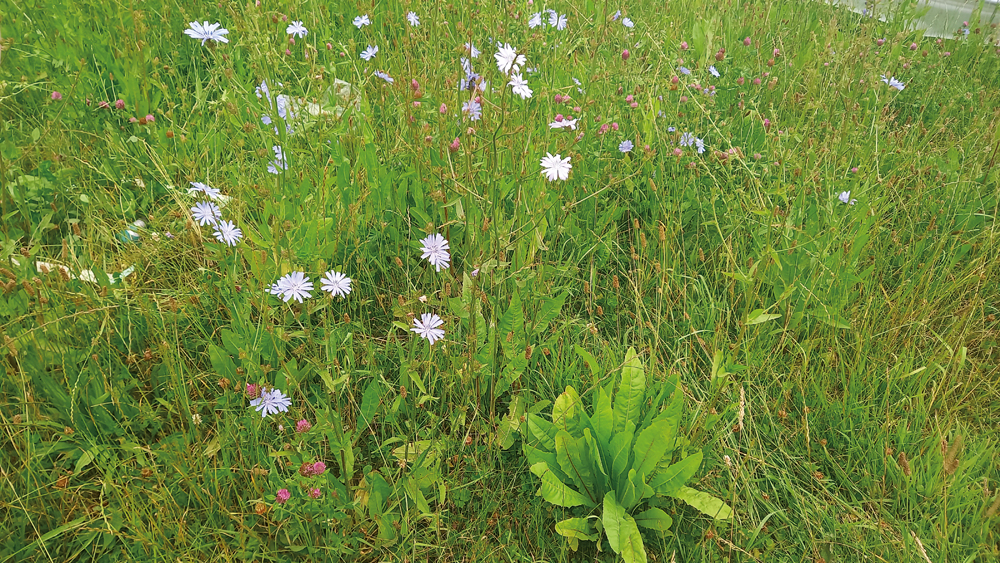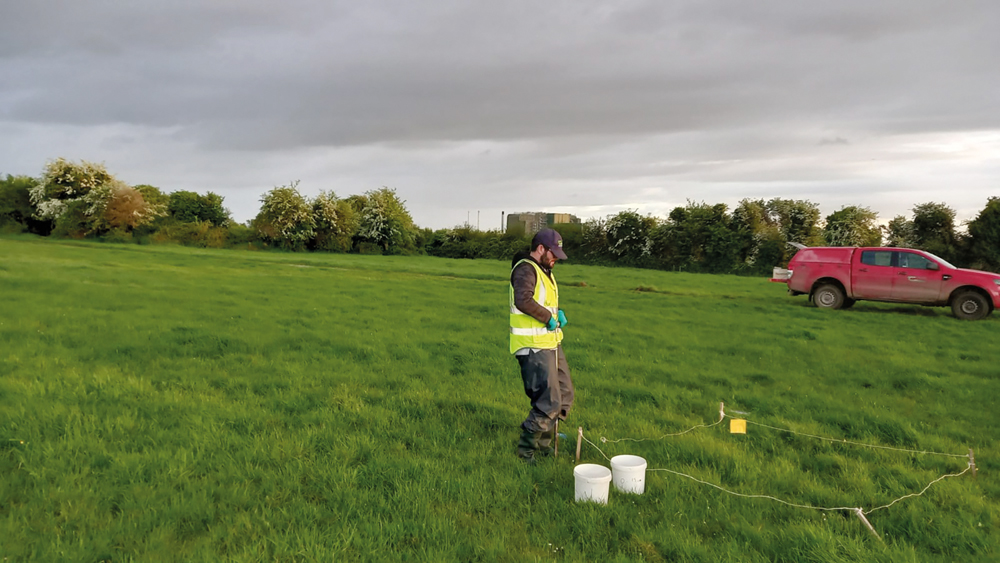27 May 2024
Microbial marvels
Teagasc research is examining the beneficial symbiotic relationship between the soil microbiome and plant diversity in pasture systems.
 Agricultural grassland soils are a rich source of microbial life. These microorganisms – which include bacteria and fungi – are instrumental in fundamental ecosystem processes such as organic matter decomposition and nutrient cycling, as well as plant productivity. Soil microbes can act as recyclers in soil, breaking down organic residues in soil to form organic matter. This organic matter is not only critical for soil structure and soil health, but also acts as a vital source of nutrients for plant growth.
Agricultural grassland soils are a rich source of microbial life. These microorganisms – which include bacteria and fungi – are instrumental in fundamental ecosystem processes such as organic matter decomposition and nutrient cycling, as well as plant productivity. Soil microbes can act as recyclers in soil, breaking down organic residues in soil to form organic matter. This organic matter is not only critical for soil structure and soil health, but also acts as a vital source of nutrients for plant growth.
Soil microbes can mine nutrients from this material in a process called mineralisation, which can release previously plant-unavailable sources of nitrogen (N), phosphorus (P) and carbon (C), explains Aaron Fox, a Teagasc Research Leaders Fellow based at Johnstown Castle.
“In addition to the mineralisation process, soil microbes lie at the heart of each step of the soil N cycle, facilitating atmospheric N2 fixation and nitrification, sequential processes which convert atmospheric N2 to ammonia and nitrate respectively, both of which are plant-available forms of N.”
Soil microbes can also solubilise inorganically-bound P through the exudation of organic or inorganic acids, which can release insoluble forms of P – such as calcium phosphate – making them more soluble in soil solution and thus easier for plants to take up. These soil nutrient transformation processes are mediated by specific microbial genes, which can be studied using state-of-the-art molecular techniques.
Increasing diversity
Sustaining grassland production at current rates against a backdrop of reduced inorganic fertiliser inputs represents a considerable challenge to farmers, continues Aaron.
“It is imperative that we manage our soils in a manner that fully optimises the capacity of soil microbes in relation to soil nutrient turnover. This can help improve the efficiency, resilience and sustainability of grassland systems to meet society’s demand for food and animal feed production, while reducing its environmental impacts.”

On-farm soil sampling
One of the key identified management strategies to achieve this is increasing the plant species diversity of grassland swards.
Plants harbour a diverse community of soil microbes around their rhizosphere (the area surrounding their roots). Plants release carbon-rich nutrients from their roots, which soil microbes can make use of as a readily available food source, Aaron explains.
“In return, microbes may make soil nutrients available to the plant; plants themselves cannot access these. Different plant species can release different varieties and amounts of these organic compounds into soils, which can support a more diverse microbial community. Different plant species also have different nutritional demands and root architectures, with some having tap root structures capable of reaching deep into the soil profile. These variations can alter the nutrient distribution patterns in soil and thus affect soil microbial activity.”
Additionally, the inclusion of specific plant species in grassland swards, such as clover, may also significantly influence microbial-mediated provision of nutrients to plants. As a legume plant, clovers are capable of forming mutually beneficial associations with Rhizobia bacteria within specialised nodules in their roots to fix nitrogen from the air. This symbiotic relationship results in a considerable amount of N being deposited in the soil (100–380kg N/ha per year in temperate pastures), which acts as a free fertiliser.
Multispecies advantage
Understanding how plant species diversity influences the capacity of soil microbes to cycle nutrients in soils is a key knowledge gap. Teagasc researchers, in collaboration with international researchers, have been assessing how manipulating plant species diversity influences the turnover of essential nutrients for plant growth and soil health.
Aaron explains: “In a long-term biodiversity grassland experiment conducted in Jena, Germany, which manipulated plant species diversity from 1–60 species, we found that the abundance of genes involved in inorganic phosphate solubilisation and mineralisation significantly increased with increasing plant species diversity.”
The results from this experiment led to the study of this effect under Irish agronomic conditions, and the differences in microbial-mediated soil nutrient cycling potential was examined between a grass monoculture, grass-clover mixture and multi-species grasslands. This involved a large sampling campaign across farms in southern Ireland.
Initial results from this sampling campaign indicate that grass-clover mixtures and multi-species grasslands result in significantly higher rates of cellobiohydrolase (an enzyme in the soil carbon cycle), compared to conventional intensively managed grass monocultures. Future work on these samples will examine the abundance of key genes involved in the N and P cycle.
“We still have much to learn about the interplay between plant species diversity, agricultural management and nutrient cycling potential,” Aaron concludes. “These results, however, give a tantalising glimpse into this largely unexplored research avenue, and suggest the great potential in harnessing the functional potential of soil microbial communities in designing and managing nutrient-efficient, climate smart pasture systems.”
Funding
Aaron Fox has received funding from the Research Leaders 2025 programme co-funded by Teagasc and the European Union’s Horizon 2020 Research and Innovation Programme under Marie Skłodowska-Curie grant agreement number 754360.
Contributors
Aaron Fox
Research Leaders 2025 Programme, Teagasc Johnstown Castle.
aaron.fox@teagasc.ie
Michael Schloter
Research Unit Director, Helmholtz Zentrum München.
Nico Eisenhauer
Professor Experimental Interaction Ecology, University of Leipzig.
Fiona Brennan
Senior Research Officer, Teagasc Johnstown Castle.
